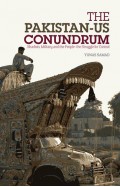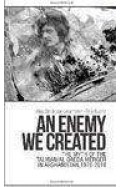The Ottomans: A Cultural Legacy
By: Diana Darke
-
Rs 9,770.75
- Rs 11,495.00
- 15%
You save Rs 1,724.25.
Due to constant currency fluctuation, prices are subject to change with or without notice.
A richly illustrated examination of the Ottoman Empire, 100 years since its dissolution, unraveling its complex cultural legacy and profound impact on Europe, North Africa, and the Middle East.
A hundred years after the abolition of the Ottoman sultanate on November 1, 1922, enough time has passed to reexamine the Ottomans and reassess their legacy. This illustrated volume, by critically acclaimed author Diana Darke, explores their unique achievements in architecture, cuisine, music, science, and medicine, as well as the political challenges they met. The Ottoman Empire faced issues shared by modern European and Middle Eastern countries: how to maintain a balance between religious ideology and secular politics and how to promote fairness and equality among citizens in a multicultural society.
While many still equate the Ottomans with the decadence of Istanbul―extravagant architecture, harems, and hookahs―they are unaware that the secrets of Ottoman success lay in a disciplined bureaucracy and a standing army that both awed and seduced its opponents. The Ottomans harnessed the talents of their diverse populations and quickly buttressed the crumbling edifice of Byzantine Christianity. Their dynamism and resilience helped fuse the cultures of Asia, Europe, and Africa, from the Himalayas to the Sahara, absorbing whatever impressed them, from Mongol armor to Persian tile work. Alongside their essential rigor, they enjoyed the finer aspects of life: in music, cuisine, and art, unafraid, even as rugged fighters, to display their love of flowers and gardens, especially tulips and roses. Behind the fine robes, carpets, and ceramics on display today in their great architectural monuments, Istanbul’s Topkapi Palace and Hagia Sophia, lie centuries of migration, trade, and struggle. In this original and beautifully illustrated book, Darke reveals a radically new picture of the Ottoman Empire
150 color illustrationsA richly illustrated examination of the Ottoman Empire, 100 years since its dissolution, unraveling its complex cultural legacy and profound impact on Europe, North Africa, and the Middle East.
A hundred years after the abolition of the Ottoman sultanate on November 1, 1922, enough time has passed to reexamine the Ottomans and reassess their legacy. This illustrated volume, by critically acclaimed author Diana Darke, explores their unique achievements in architecture, cuisine, music, science, and medicine, as well as the political challenges they met. The Ottoman Empire faced issues shared by modern European and Middle Eastern countries: how to maintain a balance between religious ideology and secular politics and how to promote fairness and equality among citizens in a multicultural society.
While many still equate the Ottomans with the decadence of Istanbul―extravagant architecture, harems, and hookahs―they are unaware that the secrets of Ottoman success lay in a disciplined bureaucracy and a standing army that both awed and seduced its opponents. The Ottomans harnessed the talents of their diverse populations and quickly buttressed the crumbling edifice of Byzantine Christianity. Their dynamism and resilience helped fuse the cultures of Asia, Europe, and Africa, from the Himalayas to the Sahara, absorbing whatever impressed them, from Mongol armor to Persian tile work. Alongside their essential rigor, they enjoyed the finer aspects of life: in music, cuisine, and art, unafraid, even as rugged fighters, to display their love of flowers and gardens, especially tulips and roses. Behind the fine robes, carpets, and ceramics on display today in their great architectural monuments, Istanbul’s Topkapi Palace and Hagia Sophia, lie centuries of migration, trade, and struggle. In this original and beautifully illustrated book, Darke reveals a radically new picture of the Ottoman Empire
150 color illustrationsThe Merchant of Syria - A History of Survival
By: Diana Darke
Rs 3,395.75 Rs 3,995.00 Ex Tax :Rs 3,395.75
My House in Damascus - An Inside View of the Syrian Revolution
By: Diana Darke
Rs 5,395.50 Rs 5,995.00 Ex Tax :Rs 5,395.50
Stealing from the Saracens - How Islamic Architecture Shaped Europe
By: Diana Darke
Rs 6,115.75 Rs 7,195.00 Ex Tax :Rs 6,115.75
Stealing from the Saracens: How Islamic Architecture Shaped Europe
By: Diana Darke
Rs 5,665.50 Rs 6,295.00 Ex Tax :Rs 5,665.50
Islamesque - The Forgotten Craftsmen Who Built Europe's Medieval Monuments
By: Diana Darke
Rs 7,915.50 Rs 8,795.00 Ex Tax :Rs 7,915.50
Zubin Mehta: A Musical Journey (An Authorized Biography)
By: VOID - Bakhtiar K. Dadabhoy
Rs 892.50 Rs 1,050.00 Ex Tax :Rs 892.50
The Origins of Political Order From Prehuman Times to the French RevolutioN
By: Francis Fukuyama
Rs 4,045.50 Rs 4,495.00 Ex Tax :Rs 4,045.50
Manning Up: How the Rise of Women Has Turned Men into Boys
By: Kay Hymowitz
Rs 845.75 Rs 995.00 Ex Tax :Rs 845.75
The Obama Syndrome: Surrender At Home War Abroad
By: Tariq Ali
Rs 1,100.75 Rs 1,295.00 Ex Tax :Rs 1,100.75
The Quest For Meaning: Developing A Philosophy Of Pluralism
By: Tariq Ramadan
Rs 1,185.75 Rs 1,395.00 Ex Tax :Rs 1,185.75
The Pakistan US Conundrum Jihadists The Military And The People The Struggle For Control
By: Yunas Samad
Rs 1,185.75 Rs 1,395.00 Ex Tax :Rs 1,185.75
An Enemy We Created: The Myth Of The Taliban Al Qaeda Merger In Afghanistan 19702010
By: Alex Strick van Linschoten
Rs 4,197.50 Rs 8,395.00 Ex Tax :Rs 4,197.50
WikiLeaks: Inside Julian Assanges War on Secrecy
By: David Leigh & Luke Harding
Rs 637.50 Rs 850.00 Ex Tax :Rs 637.50
No similar books from this author available at the moment.
Collusion Secret Meetings Dirty Money, and How Russia Helped Donald Trump Win
By: Luke Harding
Rs 3,650.75 Rs 4,295.00 Ex Tax :Rs 3,650.75
Zubin Mehta: A Musical Journey (An Authorized Biography)
By: VOID - Bakhtiar K. Dadabhoy
Rs 892.50 Rs 1,050.00 Ex Tax :Rs 892.50
The Merchant of Syria - A History of Survival
By: Diana Darke
Rs 3,395.75 Rs 3,995.00 Ex Tax :Rs 3,395.75
My House in Damascus - An Inside View of the Syrian Revolution
By: Diana Darke
Rs 5,395.50 Rs 5,995.00 Ex Tax :Rs 5,395.50
Stealing from the Saracens - How Islamic Architecture Shaped Europe
By: Diana Darke
Rs 6,115.75 Rs 7,195.00 Ex Tax :Rs 6,115.75
Stealing from the Saracens: How Islamic Architecture Shaped Europe
By: Diana Darke
Rs 5,665.50 Rs 6,295.00 Ex Tax :Rs 5,665.50
Islamesque - The Forgotten Craftsmen Who Built Europe's Medieval Monuments
By: Diana Darke
Rs 7,915.50 Rs 8,795.00 Ex Tax :Rs 7,915.50












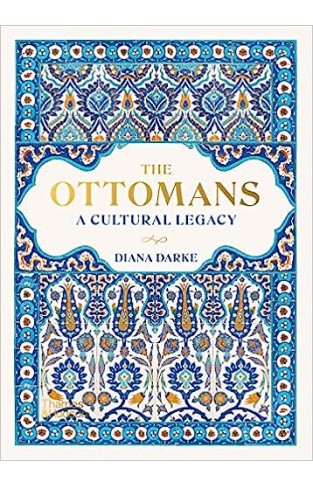
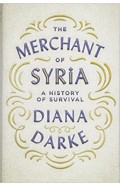
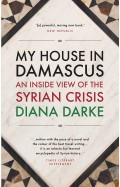

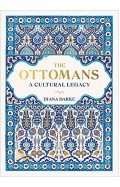



-120x187.jpg?q6)





-120x187.jpg?q6)



-120x187.jpg?q6)
